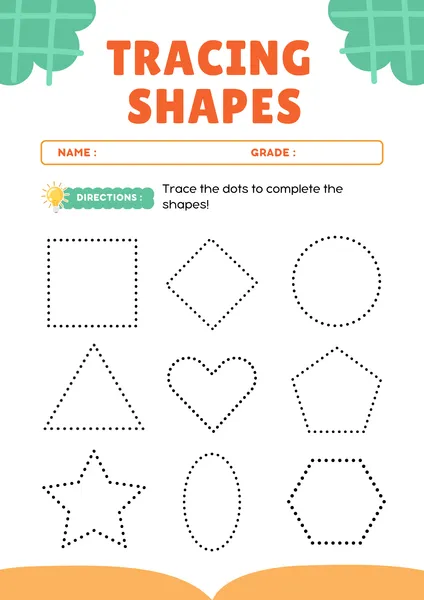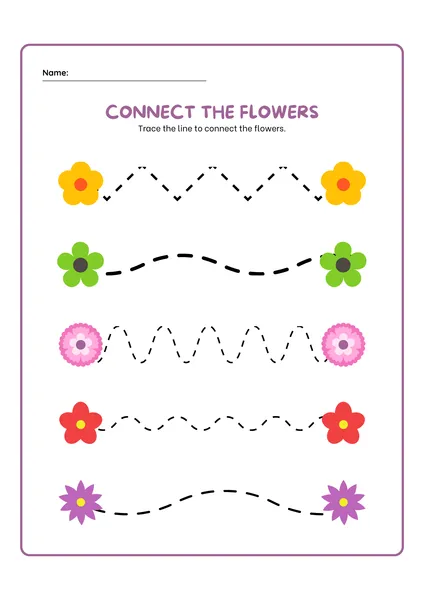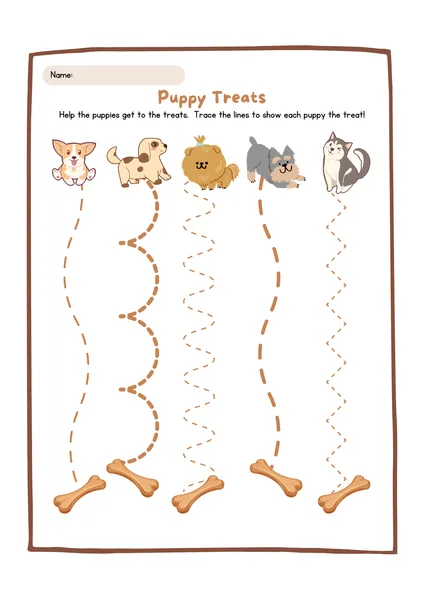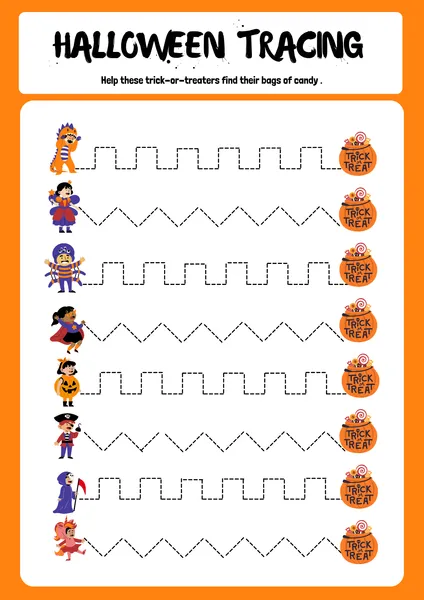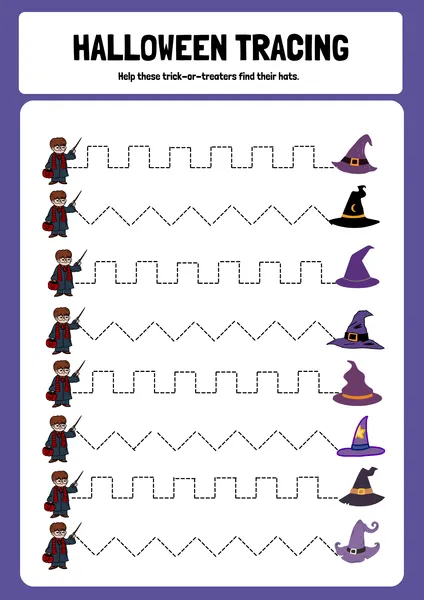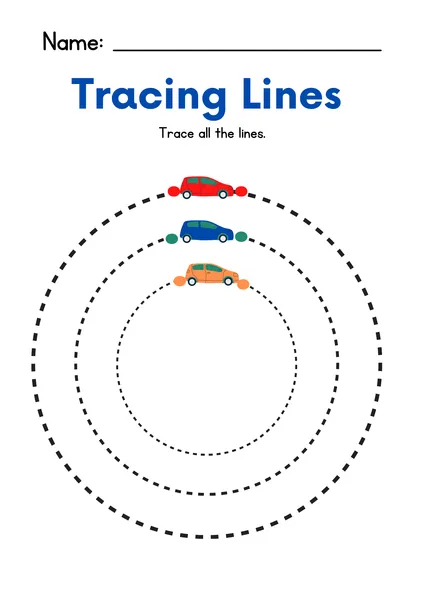Is your child ready to write? Well, they don’t need to be able to write letters and numbers just yet, but they do need to make critical pre-writing movements, and that’s where these tracing lines worksheets for preschoolers will assist! These worksheets are entertaining for your child and are one of the most helpful tools for a child’s hand-eye coordination, fine motor skills and visual perception to write successfully. Think of it like this: it enabled me to visualise that tracing lines are like the ABCs of writing!
Still, stay with me as we will discover the incredible benefits of tracing for preschoolers in this article. We will also give you a list of engaging tracing activities. We will also provide some ideas on making the tracing enjoyable and transforming this activity into play so that your child looks forward to this practice rather than dreading or avoiding it.
Advantages of Tracing for Preschool Children
Tracing offers numerous benefits for preschoolers, including:
Improved Hand-Eye Coordination:
Tracing assists the child in learning how to maneuver his hands appropriately and synchronously to what he sees. Writing is critical, but drawing, colouring, and cutting require skill.
Enhanced Fine Motor Control:
In tracing, children can expand small muscles in their hands and fingers, which is essential in handling pencils or other writing instruments.
Improved Visual Perception:
Tracing enables children to appreciate visual discriminative cues or improve discriminative ability. This skill stems from identifying letters and numbers, among other things, and the spatial orientation of objects.
Preparation for Writing:
Tracing assists the children in mirroring the pre-writing skills required for writing. These skills include:
- Line awareness: A person should be able to look with eyes along the line and the writing tool.
- Directionality: A hardness of recognising line direction as right and left, up and down, or diagonally.
- Spatial awareness: The extent to which one can perceive the relative position of one object concerning another.
- Form constancy: The capacity to understand and recall that symbols, such as letters and numbers, mean the same thing, big or small, at whichever angle they are turned.
Tracing Activities for Preschoolers
There are a variety of tracing activities that you can use with your child, progressing from simple to more complex as their skills develop:
Tracing Straight Lines
Start with just horizontal and vertical lines. To draw the lines, you can use a ruler or look up printable tracing lines worksheets for preschool-age kids on the internet (use keywords such as free printable tracing lines worksheets).
Tracing Curved Lines
When your child masters the straight-line drawing, advance to curved lines. Cut simple curves on paper, or use the shape of a cookie cutter, stencil, edge of the bowl, etc., for your child to copy from. To get printable worksheets with curved lines, try searching for “preschool tracing worksheets curved lines.”
Tracing Zigzag Lines
Wavy lines are more complicated because they can be written diagonally; this exercises the hand muscles, particularly the finger muscles, and improves the child’s visual discrimination. Create zigzag lines with the help of pencil and paper, or find the ready-printed worksheets using the search request “zigzag line tracing worksheets for preschoolers.”
Following Paths
It makes tracing enjoyable, besides solving questions like where to put hands while tracing. Take a piece of paper and a pencil, draw a simple line with two points, or use a toy car to make a trail for your child to trace along it with a finger or a crayon. This helps to develop spatial orientation and spatial planning.
Tracing Shapes
Teach simple geometric shapes such as circles, rectangles, and triangles. Drawing must begin with large forms and progress to small forms. You can easily download shape tracing worksheets with a simple search as “preschool shape tracing worksheets”.
Tracing Letters and Numbers
Learning essential songs, reciting simple alphabets, and tracing letters and numbers may follow after your child gets the hang of it. Start from capital letters since there are commonly less complex structures—Google “alphabet tracing worksheets for preschoolers” to find papers you can print.
Multi-Sensory Tracing
Add various types of textures and materials to make the tracing more entertaining. Have your child practice tracing lines in:
Finger paint
Allow them to take a short walk or let the kids make shapes on paper with finger paint or a small brush.
Shaving cream
Facility them to draw lines in shaving cream on a tray through their finger.
Sand:
Take sand and have them draw lines and shapes on it with their finger.
Easy Tracing Lines Worksheets for Preschoolers with Fun Themes
To make tracing more engaging for young learners, use worksheets with themes that spark their interest:
Animals
Learn more about the animals you have, and try to have your child trace the outlines of their favourite animals.
Vehicles
Cars and trucks, aeroplanes, and trains are always great activities to trace, especially when teaching preschool children. You can look for “vehicle tracing worksheets for preschoolers” to get printable worksheets for kids.
Food
Introduce tracing into fun-filled meals with food-related worksheets! If you want worksheets with the outlines of fruits, vegetables and other fun foods, just type in “food tracing worksheets for preschoolers” on the web.
Holidays
Look for “Christmas tracing worksheets for preschoolers” to find sheets with Santas, reindeer or presents on, or “Halloween” if you need pumpkins, ghosts, or bats to trace.
Seasonal Themes
The tracing should be linked to the current season. During spring, worksheets designed to depict flowers and butterflies usually come in handy, referred to as spring tracing worksheets for preschoolers.
Popular Characters
Ask your child to trace their favorite character. To enhance the fun of tracing, Free printable tracing worksheets on many websites depicting cartoon characters or superheroes.
Easy-Tracing-Lines-Worksheets-for-Preschoolers
Strategies for Fun and Active Tracing
Here are a few tips:
- Use a Variety of Materials: Let them experience different kinds of writing instruments, including crayons, coloured markers, coloured pencils, and chalk. People also add different colours and textures just to make it more lively and to make tracing even more enjoyable.
- Make it Playful: Turn tracing into a game! Your child can trace the line quickly and challenge his companion to race the child who draws the fastest line, or you can draw a tracing ‘maze’ that the child has to follow to get to a ‘prize.’
- Be Patient: Drawing may be complex for little kids, so don’t rush and provide lots of cheers. If your child makes mistakes, do not get annoyed or upset with them. You only try to educate them on how to make corrections and continue practising.
- Celebrate Success: After your child has done tracing, always celebrate by telling them well done. This shall assist them to be proud of their achievements and regain their focus on more learning.
- Break Down Tasks: If your child is troubled in a specific tracing activity, make it easier on them by explaining the steps. For instance, if they struggle to make a whole circle round shape, ask them to make a round shape.
- Use Adaptive Tools: For children who struggle with grasping the pencil, you can use pencil slogans or thick pencils to support handwriting.
- Focus on the Process: It is vital to reiterate that your primary aim is to work on your child’s pre-writing skills, not the visual-motor imitation skills. Emphasise the tracing activity and try to make it enjoyable for your child.
Drawing is a significant preliminary to writing that prepares learners to control hand, eye, and vision in writing. Therefore, you must have your child do as many tracing activities as possible and make them as fun as possible so they don’t have a challenge in writing class. Still, the teachers would rather have the students as winners. Tracing lines worksheets for preschoolers is one of the best activities a parent could provide for their child to make the right start and write perfectly.
